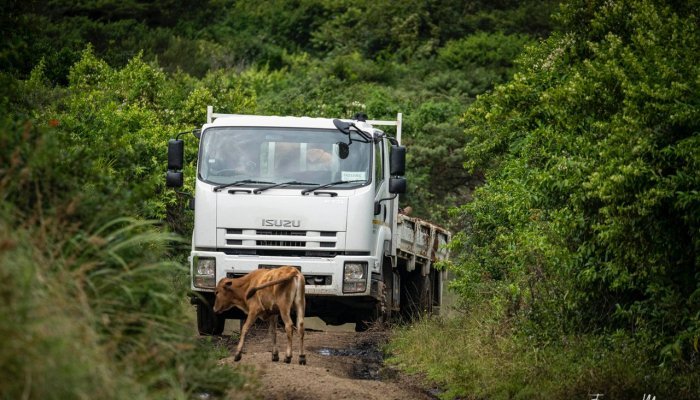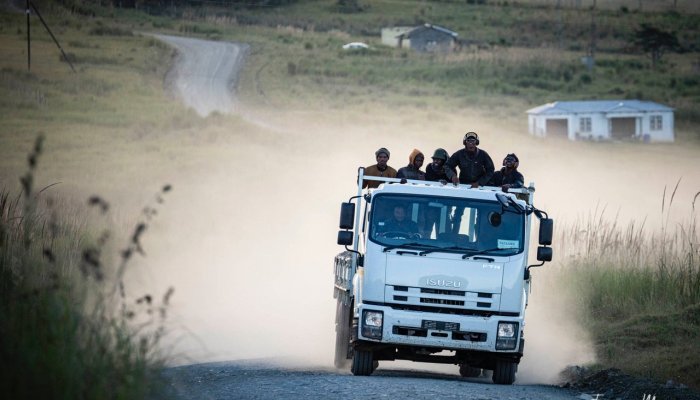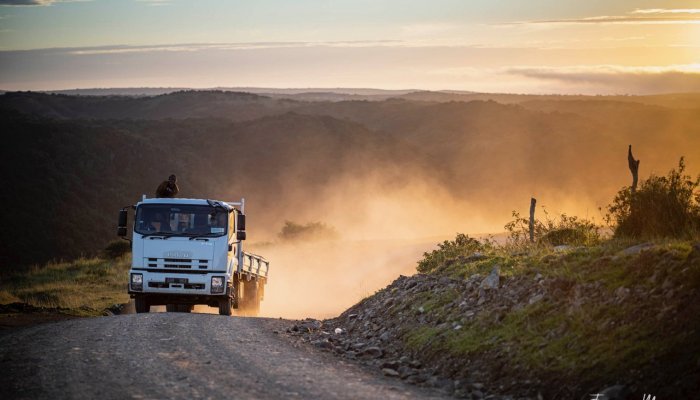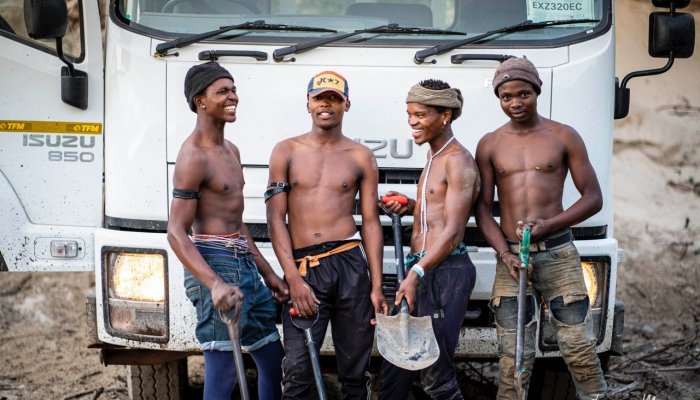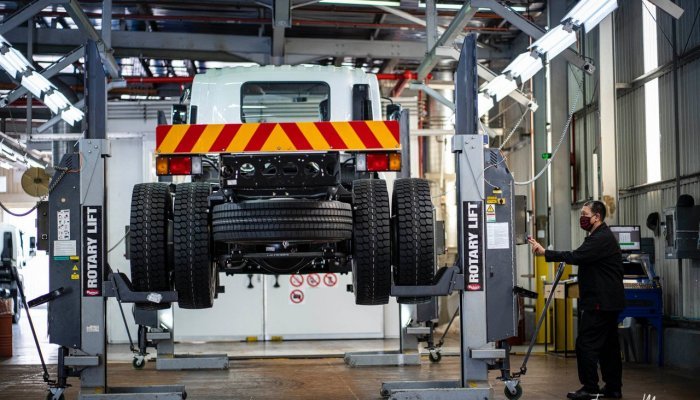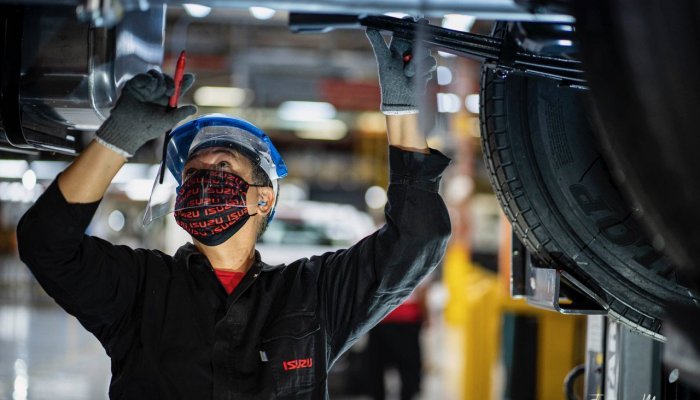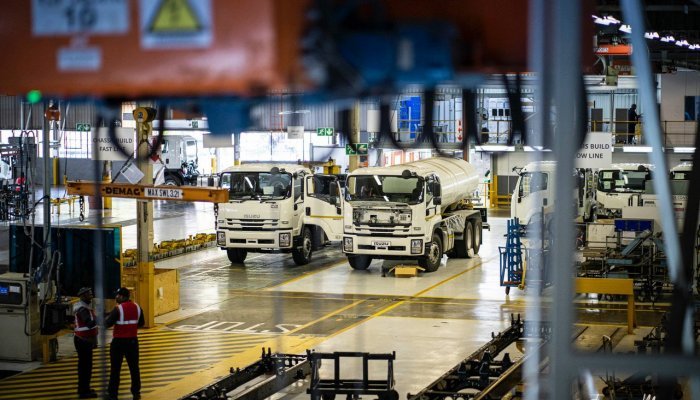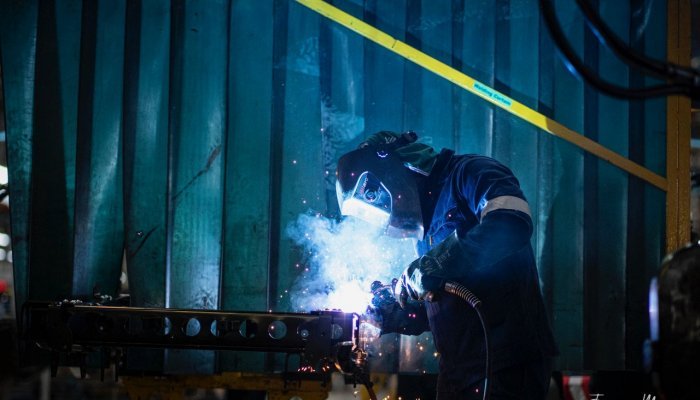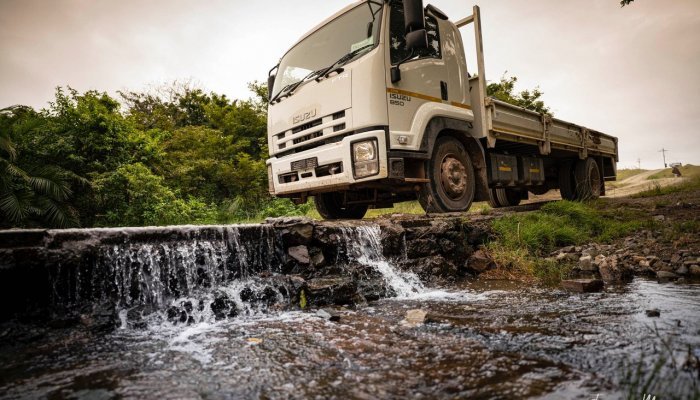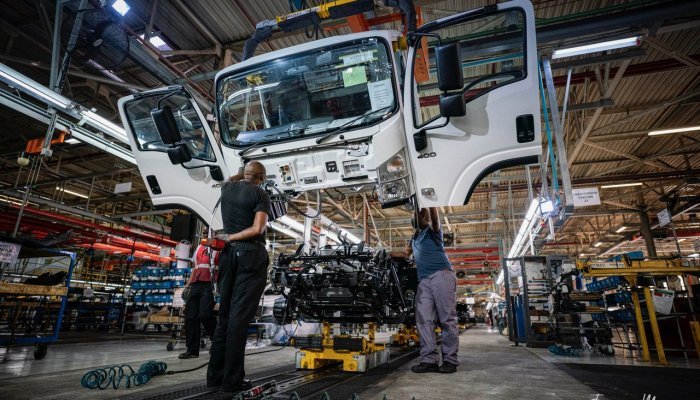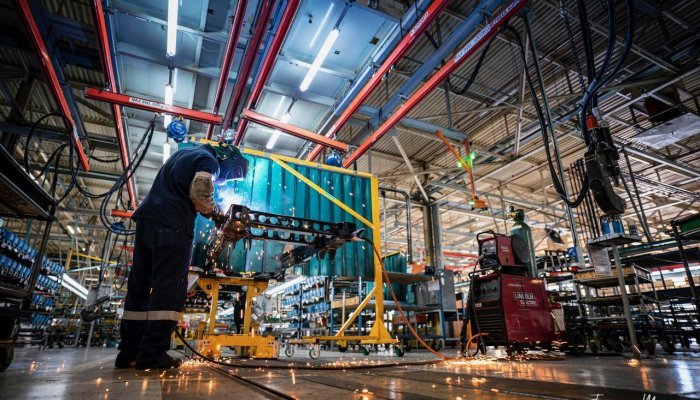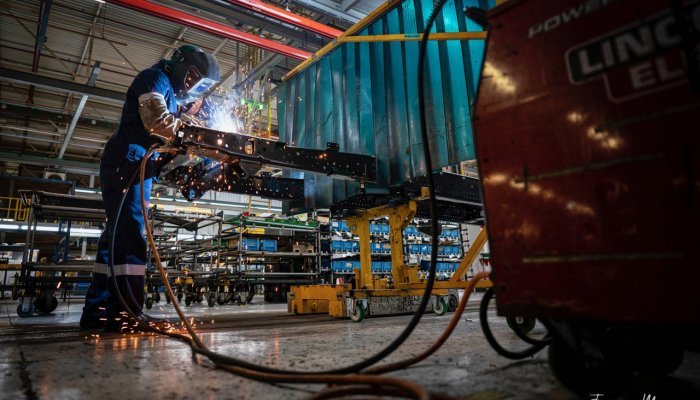Four young guys are riding shotgun on the back of the speeding truck. They are free-styling just behind the cab, with the wind whipping at their faces where they perch upon the spill-over edge of a shifting load of sand filling the flatbed to the brim.
One of them fires up a speaker linked to his phone, cranking up the volume on amapiano’s latest kwaito-crossover tune. His mate strikes a match and draws deeply on a brown-paper spliff, then allows the tendrils of smoke to curl from the corners of his mouth. They all whoop at the sky in unison as the ganga aroma veils into the wide Wild Coast dawn.
This land of rolling hills and deep, cleft valleys is no place for pretenders. Just getting there is an extreme challenge in itself, due to the poor condition of the gravel roads in the area. The locals who live and work here refer to their coastal tracks as “iindlela ezivela esihogweni”: "the roads from hell".
It is no wonder that Mister Mesani stays fully focused on the strip of gravel unfolding beyond his windscreen as we ascend from the Sihlontlweni River valley. “Eish man, these potholes,” he mutters, dodging a monster mud puddle. The Isuzu’s FTR850 engine hums contentedly. “This baby has done 240 000km since I bought her,” Mesani smiles, as he gears down on the approach to the steep climb.
Ahead of us, the gravel road snakes westwards, occasionally lurching to the very edge of the valley’s precipitous cliffs. Here and there, we meander through verdant patches of indigenous montane forest, where the raucous calls of trumpeter hornbills echo from the dense canopy. They flit from branch to branch, like mechanical cartoon caricatures tracking our progress.
It’s been a long day. We met Mister Mesani and his crew at 03h30 and set off in the pitch-dark to the first of their designated sand-loading sites. The spade boys set to work; they are barely out of their teens, but attack the dune with intense fervour. Scoop, pivot, hurl, repeat…
They do this a thousand times until the truck groans under four tonnes of sand, their sleek, hard bodies glistening, with rivulets of sweat coursing through the dust coating on their ebony skin. There are no gyms required here in Mazeppa Bay, only honest-to-god hard work and slugs of mageu (sorghum beer) to keep the inner fires stoked.
“We do deliveries six days a week,” explains Mesani, while searching for cell signal on a grassy knoll. He is checking instructions for the load, because Google Maps is rarely the best way to navigate the Wild Coast. Satisfied, he beckons us towards the truck, and then slowly judders along the rock-strewn access track.
Minutes later we’re back on the gravel road, with the F-Series bombing ahead of a dust cloud billowing from beneath the rear wheels. Dodging donkeys, cattle, errant sheep and free-range kids, we blitz past Maxambeni, iGqunqe, Kwamanyube, Lusizi, and a scattering of villages so small that most South Africans will never know of their existence.
The crew makes short shrift of the unloading, shifting a couple of tons of sand into the yard of a grateful gogo (Xhosa for grandmother). She smiles from ear to ear, counting out R1 200 in crumpled bank notes, all while explaining the additions she is planning for her small home.
Mister Mesani nods away, but mentally he is already onto the next project, furtively checking his phone for confirmation. There’s no time to waste, as we need to pick 400 breeze blocks in eGqurha (or Butterworth, if you will), making for an arduous five-hour round trip. Nothing happens quickly on these roads …
“Our biggest problem here is the infrastructure”, Mister Mesani explains as we thump through the umpteenth pothole. He’s right, of course: the 48km to the closest centre with a hardware store (eGqurha, on the N2) takes well over two hours by car and there is no public transport system to speak of.
Remote villages have therefore become utterly dependent on the Wild Coast truckers trading these godforsaken routes, and without them and their trucks, the local economy would surely collapse. It seems as if every community hub has a truck or three languishing under a lean-to or a tree, and the roads are abuzz with these "load warriors".
No job is too big or too small, and in true African fashion, you can share the load; going half-half or four-up, with final cost-to-customer calculated according to distance, size, weight, time and road condition. “If it is a bad road, we must charge more, because of the damage to the truck, and wear and tear on especially the tyres," Mister Mesani explains.
Sand and building materials make up much of the local freight, but anything goes … Cattle and sheep need to get to markets; the small family hotels dotted along the coast need groceries, furniture and appliances; fresh produce and FMC goods flow to hundreds of tiny spaza shops; and there is never a day when the shebeens do not need their Zamalek stock replenished.
One of the key community needs is water. During the dry season here, villages often run dry, and the only way to survive is once again to depend upon these hardy trucks. “When the rain does not come, they load up those Jojo tanks and bring drinking water to my house,” Mama Ntsendwana explains over a cup of Joko tea.
Her spotless parlour is all chintz and velour, and she regally sprawls in a polka-dot dress on a plush, upholstered couch. Next to her, her little granddaughter boldly eyes the camera, pulling funny faces. The Ntsendwana spaza shop services the outlying community here, and it is once again the truckers who keep their shelves stocked.
“Those trucks and those drivers, hey, they never stop working,” Mama Ntsendwana continues. “My son Lunga grew up in this village. Clever boy, always with a plan, he ended up working for Isuzu; that’s why everyone here drives one of their trucks, I think.”
Despite many financial obstacles, the people here on the Wild Coast make do as best they can. I’ve come to realise the trucking community is integral to the survival of their rural economy, handling everything from the delivery of bread to spaza shops, building material from towns, drinking water to private homesteads, as well as all the countless other necessities.
This is Africa, and our work here is never done. And these are the truckers that keep Mzansi moving, literally helping to feed millions of mouths, while servicing customers both in South Africa, and across the length and breadth of the continent.
They are the true "Kings of the Wild Coast".
The truck manufacturing sector – an overview
Most contemporary truck brands, including Volvo, Fuso, Tata, Isuzu and the likes, specifically aim for the emerging market in Africa. This SMME sector has shown robust growth over the past decade, and marketing campaigns as well as their related finance offerings are generally tailored to address their needs.
“Fuel economy, build quality and service reliability are what we continually strive for,” explains Tim Hendon, the senior marketing manager (ROFA) at Isuzu. This outlook is echoed by the truck industry as a whole, and with the automotive industry as a whole valued at R640-billion just in South Africa, it packs a massive economic punch.
“The actual purchase price of a truck only amounts to between 5-8% of the actual cost over a truck’s lifecycle,” explains Hendon. “I can’t say it is insignificant, but the real calculation for an owner should focus on the vehicle’s up-time, which practically equates to that truck’s ability to earn an income over its lifespan.”
Globally, the truck manufacturing sector rates as a major market segment. A study by Deloitte estimates that global truck unit sales will approach nearly four-million units by 2024. Projected figures for the African continent come to approximately 100 000 units, a mere fraction of global sales, but still accounting for a sizeable financial injection to the continent’s economy.
The good news is that Africa is seen as having exceptionally high market growth prospects. A range of reforms and regulations is bringing the continent in line with international markets, with the Association of African Automotive Manufacturers (AAAM) aiming to institute both tax holidays and duty exemptions to stimulate future market growth.
Improvements in road and related infrastructure in Africa see many countries on the threshold of achieving status as "developed" countries, with a corresponding increase in earning potential certain to kickstart vehicle ownership, and therefore a corresponding uptake in sales.
South Africa continues to lead the continent as the main automotive industry economy despite a marked collapse in sales and manufacturing capacity since 2019. For example, commercial vehicle output dropped by 3.07% with registered sales figures down to 181 233 units in 2019.
The National Association of Automobile Manufacturers of South Africa is confident that the country’s status as a hub for exports of passenger and commercial vehicles will see capacity spike, with accelerated growth expected beyond 2022.
Most of the figures available currently are for passenger vehicles, but solid growth in export sales during January 2021 (22 771 units) points to a healthy year-on-year increase of nearly 40%. This positive growth has seen major global brands expanding operations in the country, generating major investments from Ford, Nissan and Isuzu.
Ten SA motoring facts and figures
- The automotive industry constitutes the largest manufacturing sector in SA’s economy.
- Seven of the world’s major automotive manufacturers are represented here.
- As an industry, it contributes 4.9% to the country’s GDP, despite a 2% post-Covid drop.
- Total earnings through the SA automotive industry is projected at R641-billion for 2022.
- The automotive sector accounts for more than 30% of SA’s manufacturing output.
- In 2018, vehicle exports equated to R201.7-billion (or 15.5%) of SA’s total exports.
- A record 387 125 vehicles (worth R148-billion) were exported in 2019.
- Vehicles and components are exported to 151 international markets.
- The South African automotive industry is our fifth-largest exporting sector out of 104 sectors.
- SA’s automotive manufacturing industry employs roughly 120 000 people, and is responsible for approximately 457 000 jobs across the economy’s formal sector.
Based on figures supplied by the National Association of Automobile Manufacturers of South Africa in 2019.
SOURCES:
- www.mordorintelligence.com – African Automotive Market Trends
- www.naamsa.net - National Association of Automobile Manufacturers of South Africa
- www.deloitte.com – Truck Market 2024
- www.trade.gov - Official Website of the International Trade Administration


